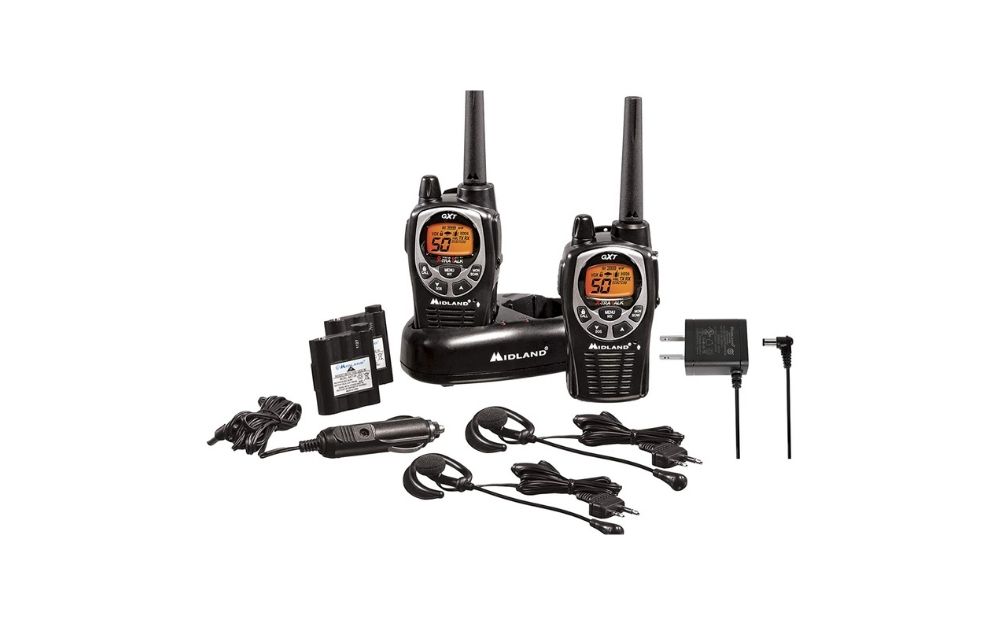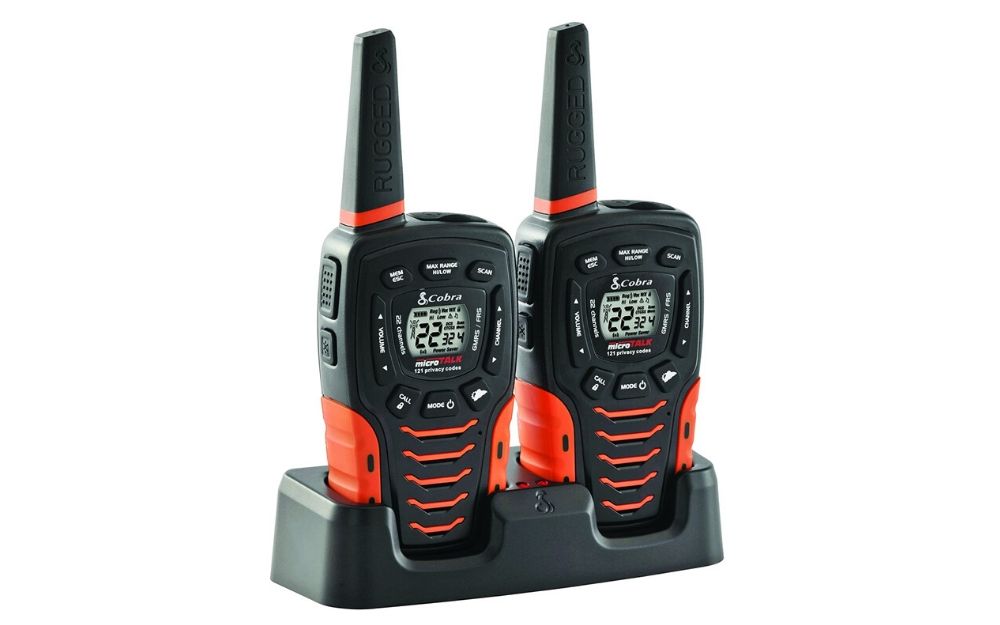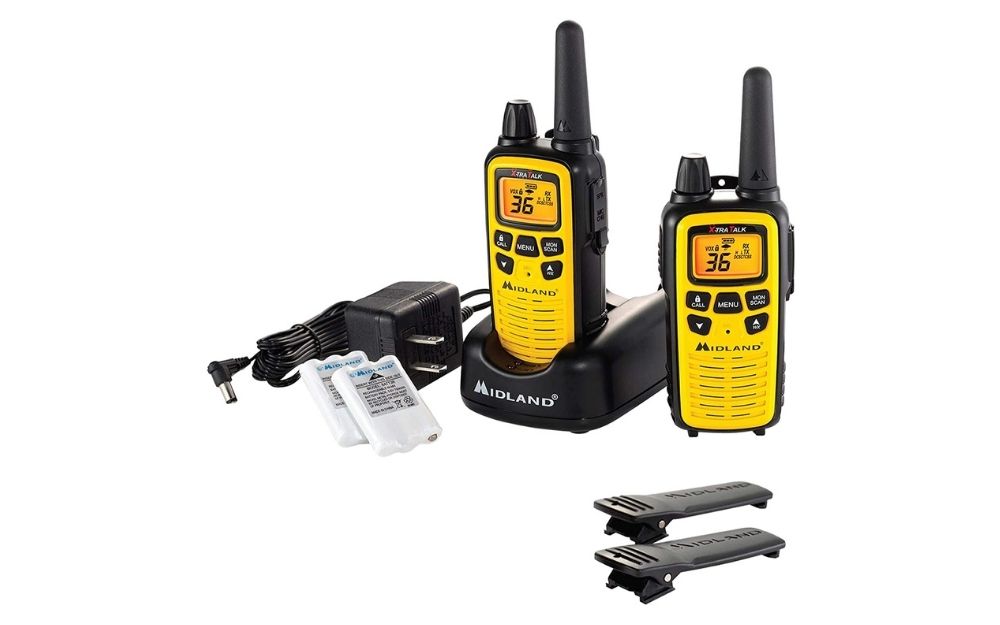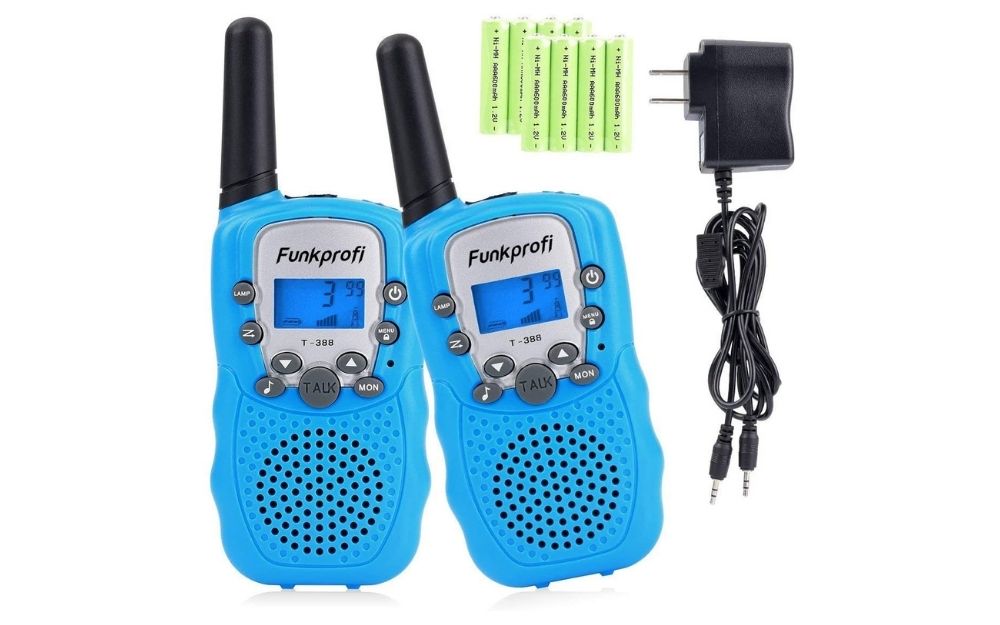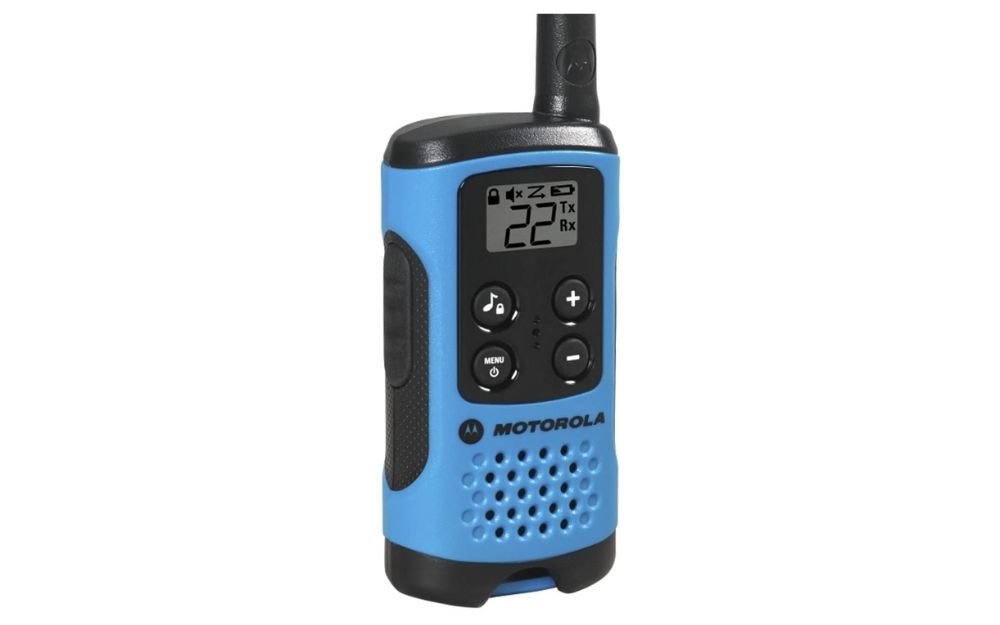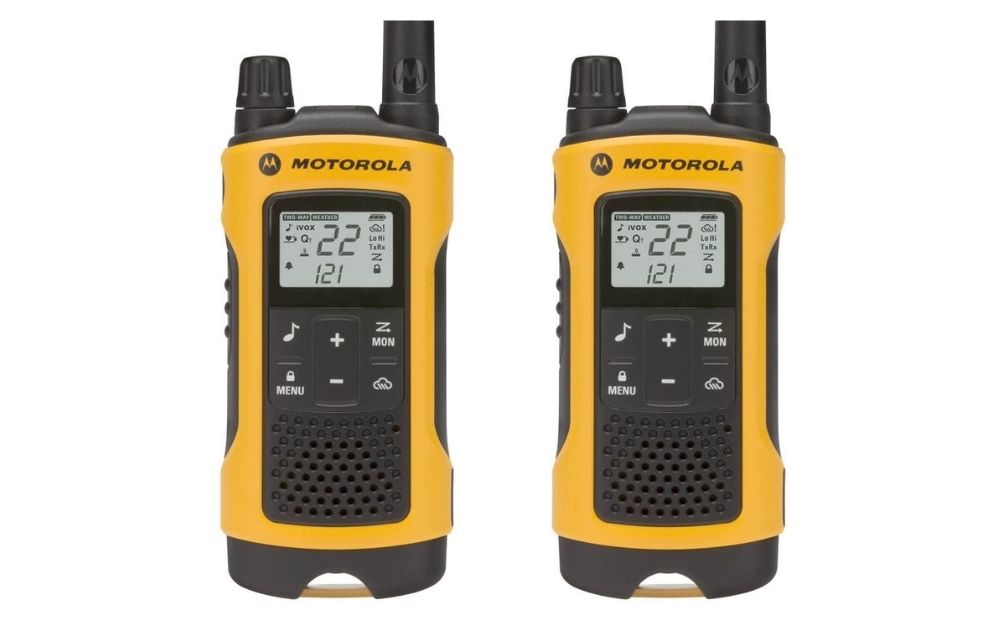If you like to ski with a partner or a group, a set of walkie talkies for skiing is ideal for staying in touch, and that’s true whether you ski in the back-country or at resorts.
Let’s say you like the easy trails and your skiing mate likes the black diamond runs.
With ski radios, you can connect when it’s time for apres-ski activities, or when you want to meet at the bottom of the hill to head home.
You can also use a ski radio to stay in a touch as a group doing backcountry skiing or other outdoor adventures.
So that leads to the question, what’s essential in a ski two-way radio? There are some options you can’t live without, and other aspects of a ski radio that you really don’t need.
Let’s look at our top picks for best walkie talkies for skiing, and then look at what you should be considering when shopping for ski radios.
Best Walkie Talkies For Skiing
| # | PREVIEW | Product | |
|---|---|---|---|
| 1
Best For Higher Budgets
1Midland 50 GMRS Two-Way Radio For Skiing
|
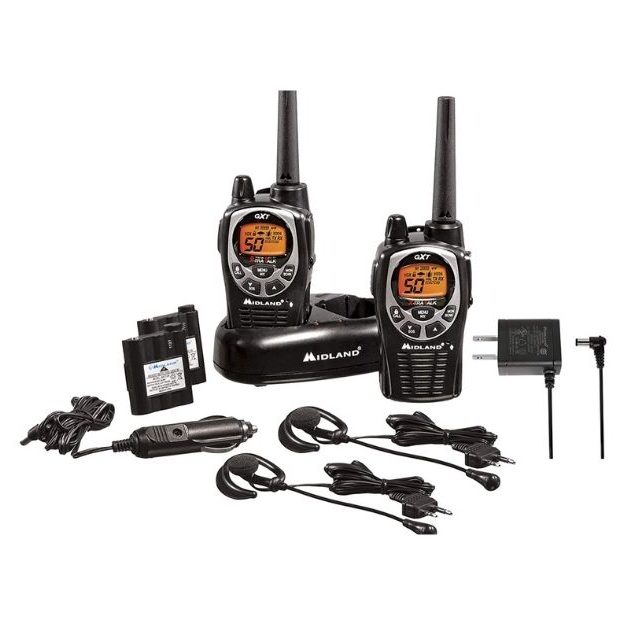
|
|
|
|
|
|||
| 2 |
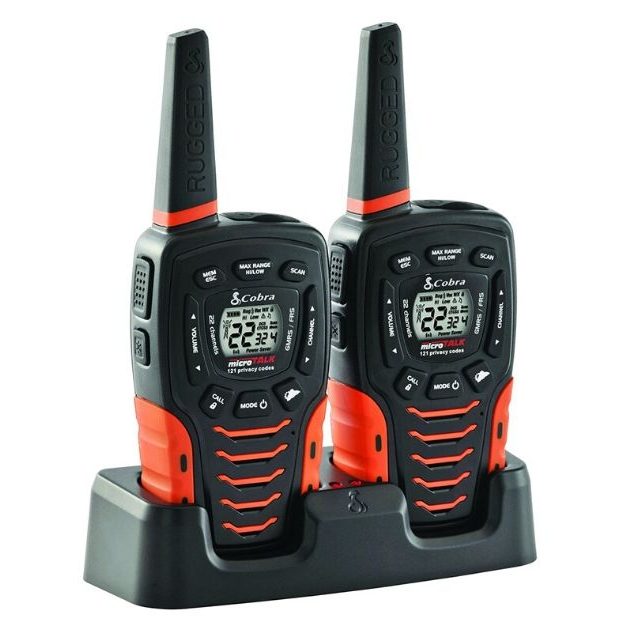
|
|
|
|
|
|||
| 3
Best For Low Budgets
3Midland LXT630VP3 Walkie Talkie For Skiing
|
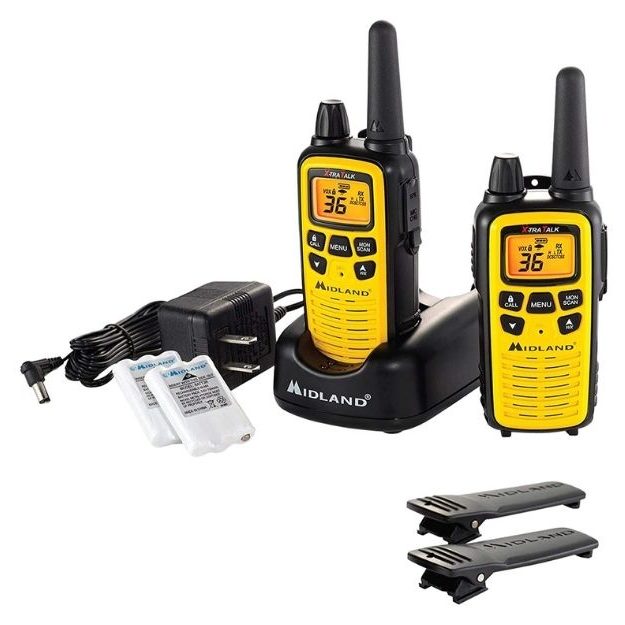
|
|
|
|
|
|||
| 4 |
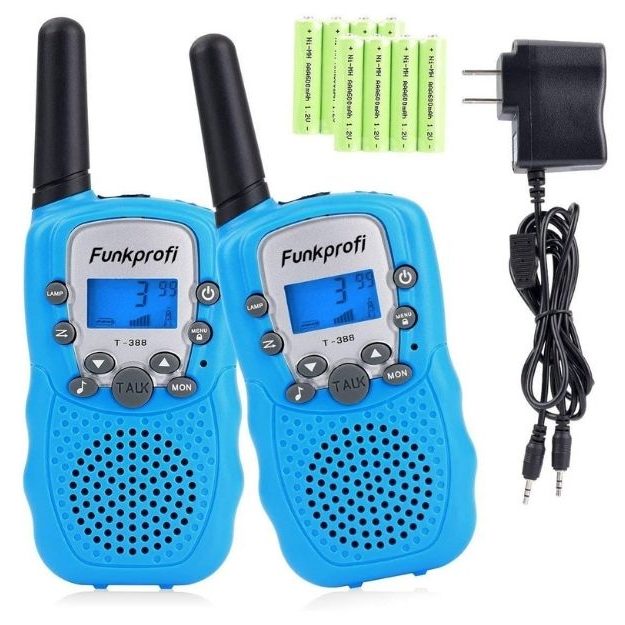
|
|
|
|
|
|||
| 5 |
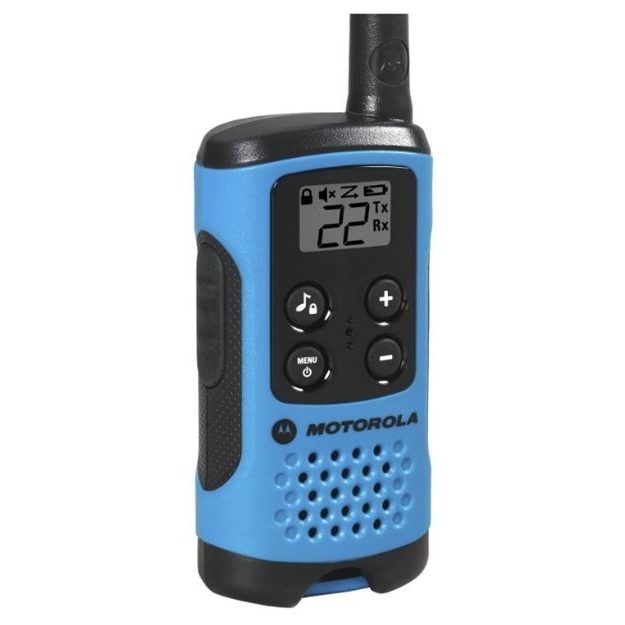
|
|
|
|
|
|||
| 6
Best Overall
6Motorola T400 Walkie Talkie For Skiing
|
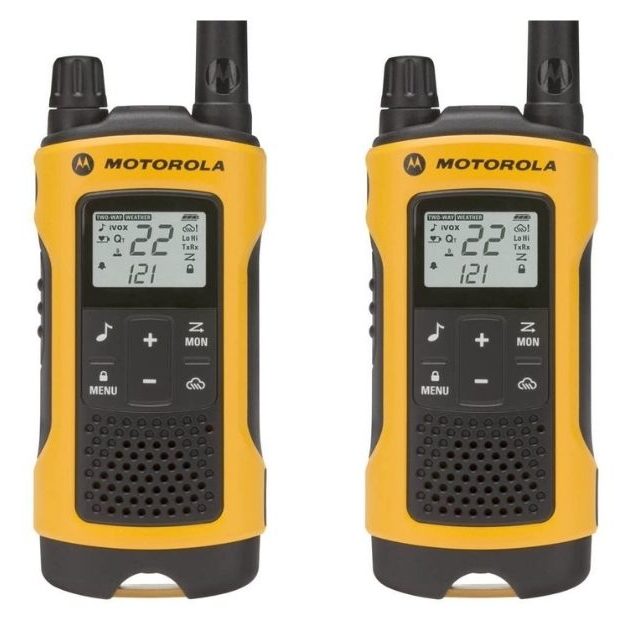
|
|
|
|
|
|||
1. Midland 50 GMRS Two-Way Radio For Skiing
- Two radios with rechargeable battery packs
- 50 GMRS (General Mobile Radio Service) channels
- Privacy codes give you up to 3,124 channel options to block other conversations
- Channel scan checks for activity
This set of two radios comes with rechargeable battery packs for each radio, two boom mic headsets, two belt clips, as well as a 120V dual desktop charger, an AC adapter, and a DC adapter.
These two-way walkie-talkies have 50 General Mobile Radio Service channels, along with channel scan to check for activity.
In open areas with few obstructions, they have a 36-mile range. There is an eVOX – Easy Voice and Sound Activation Transmission, with 9 sensitivity levels for hands-free operation.
There are also privacy codes to allow you channel options for blocking other conversations.
An NOAA weather scan and alert is included, which scans through 10 available weather (WX) band channels. It then locks onto the strongest weather channel and provides alerts and severe weather updates.
In the event of a severe weather risk, the NOAA Weather Alert sounds an alarm. There is minimal water protection although the JIS4 Waterproof Protection will protect from water splashes.
Specifications
Pros
- Splash resistant water protection
- 36-mile range with longer range in open areas
- NOAA weather alert sounds an alarm for severe weather in your area
- Comes with headsets and belt clips
Cons
- Minimal water resistance for splashes only
- 22 channels and the other 28 are privacy code channels
2. Cobra ACXT645 Walkie Talkie For Skiing
- Built-in flashlight
- Rubberized grips
- NOAA alerts
- PTT-enabled
The Cobra ACXT645 is designed for enhanced user survivability. It pairs high durability with excellent function, with its high range, maximum frequency compatibility, weather alert scanning capability, and even a built-in flashlight for low-light conditions. This walkie-talkie can tune into 22 FRS frequencies, as well as the standard GMRS ones, to allow for universal communication within a maximum range of 35 miles.
The device has a weather alert—a feature that shines best during stormy seasons. It also has rubberized grips that make holding the radio comfortable and secure. However, because of its limited microphone volume, you have to hold the radio closer to your mouth as you speak to make sure you’re heard loud and clear.
Specifications
Pros
- Durable
- Comfortable to use
- Convenient survival features
- Great range
Cons
- Microphone is somewhat weak
3. Midland LXT630VP3 Walkie Talkie For Skiing
- Two-pack with two rechargeable battery packs
- 36 FRS (Family Radio Service) channels
- Channel scans for activity
- Privacy channels to block other conversations
This two-pack of two-way walkie talkie radios are bright yellow and black, giving them excellent visibility in any conditions.
They feature 36 FRS (Family Radio Service) channels for licence free communications. There is a channel scan that checks for activity.
Ensure your power needs are covered by choosing between the rechargeable battery pack (two are included) or switch to AAA batteries (not included).
Range is up to 30 miles, with longer range communication possible in open areas where there are few obstructions.
The radios also come with the Continuous Tone-Coded Squelch System, which provides privacy channel options to help block other conversations.
You can also set it to silent operation to turn off all tones if desired. The NOAA weather scan and alert will scan through 10 weather channels, locking into the strongest one, and then provide an alert in any severe weather warnings.
Comes with the two radios, two rechargeable battery packs, two belt clips, a desktop charger and an AC Adapter.
Specifications
Pros
- Bright yellow for excellent visibility
- Use the included battery pack to recharge or opt for AAA batteries
- Silent operation turns off tones
- Weather scan and NOAA weather alert in severe weather
Cons
- There are 22 channels and the other 14 are privacy code channels
- Minimal water resistance
4. Funkprofi Long Range Walkie Talkie For Skiing
- Two pack of radios
- 16 preset channels
- Also has 50 CTCSS encryption codes on every channel, allowing you to avoid interference
- Comes with earpieces for noise reduction and better hearing ability
The two-pack of two-way walkie talkies come with two charging stations and lithium-ion batteries, two belt clips, two hand straps and two ear pieces.
There are 16 preset channels and 50 tone-squelch encryption codes to help you find a channel without interference. Range is up to five miles in open fields and down to about 2-3 miles in residential areas.
While these are suitable for outdoor activities, the reduced range makes them more suitable for industrial uses like a construction area, or for a security guard, although there is a flash light on each radio.
The rechargeable battery takes about 2-3 hours to charge on the included charging stand. Battery life is about 8-9 hours, with a power-saving function that helps to extend battery life.
It also notifies you of low power and when to charge.
Specifications
Pros
- Activate the VOX Hands-Free function to automatically transmit when you speak
- Features a light
- Battery save function saves power
- Charge reminder
Cons
- Range is only 5 miles in open areas, and reduced to 2-3 miles in residential areas
- Range is more suited to industrial or residential use rather than outdoor adventures
5. Motorola T100TP Talkabout Radio For Skiing
- Three radios included in the set, along with three belt clips
- No need for a charger or power source as they run on AAA batteries
- 22 channels
- Range of 16 miles in good conditions
This set is good for those who need three walkie talkies, although there is also a two-pack available. These two-way radios are also not rechargeable.
Rather, they run on three AAA batteries in each radio. This eliminates the need to carry a charging station and require a power source, but it does mean you need to carry extra batteries if you plan to use them for long periods of time.
Battery life is about 18 hours and there’s a flashing low battery alert. They are compatible to receive communication from other Family Radio Service and General Mobile Radio Service two-way radios.
The range of 16 miles varies, like other two-way radios, and is often less than the quoted maximum.
Range is affected by terrain, weather conditions, obstructions and other factors.
Specifications
Pros
- Battery life up to 18 hours
- Compatible with other FRS/GMRS radios
- Low battery alert
- Auto squelch
Cons
- Have to carry extra batteries if you want to use for a long period of time
- Actual range varies based on conditions
6. Motorola T400 Walkie Talkie For Skiing
- Two-radio set with two belt clips
- Range of 35 miles
- Bright yellow color for good visibility
- NOAA weather channels and alerts
The two-pack of two-way radios comes with two belt clips and they’re bright yellow, giving them excellent visibility in any conditions.
The Talkabout also has an Ingress Protection rating of 54, meaning it can handle dusty conditions and splashes of water. It features 22 channels and each one has 121 privacy codes.
It has a built-in LED light for emergencies and a quiet talk interruption filter.
The radios feature the NOAA weather channels and alerts, letting you know if weather conditions are changing in your area. The radios have dual power, using either two rechargeable batteries with two micro-USB wall charging cables, or AAA batteries.
These walkie talkies are compatible with other Family Radio Service and General Mobile Radio Service two-way radios.
Set the call tone from among 10 choices so that you and your team will hear a special tone instead of a normal ring. The VOX hands-free option activates transmission with your voice.
Specifications
Pros
- Communicates with other FRS/GMRS radios
- IP rating of 54, meaning it’s protected from dust and wet weather conditions
- Built in LED lighting
- 10 different call tones let you alert your partner when you’re attempting to communicate
Cons
- Be careful with the IP rating as the radios can’t be immersed in water
- Some users prefer radios with a charging station and rechargeable batteries
Ski Walkie Talkie Buying Guide
Sound Quality, Channel Interference and “Privacy” Codes
Even though you’ll be outdoors and likely not using your walkie talkies in noisy environments, you will still want good sound quality.
Nothing is worse than connecting with your skiing partner and hearing only static interference, or the voices of other users on the same channel.
And since two-way radios have a limited number of channels available, there is a chance that others will be using the same channel as you.
So most of our picks include some type of squelch system, which cuts out interference.
The feature is known as CTCSS, which stands for Continuous Tone Coded Squelch System.
Simply put, this system provides a different tone for each group on one channel, so that users will hear only the activity from their own group.
This system helps to reduce missed messages and the distraction of unnecessary radio chatter from other users.
To do that, the radios use what’s called privacy codes, based on their CTCSS capability.
You simply set the radios to the same channel and privacy code, and then communicate between the two radios without interference. An entire group can be set to the same channel and privacy code.
However, it’s important to note that despite the fact they are commonly called “privacy codes,” they do not provide any privacy.
Anyone can tune in to the same channel and code and hear the conversation. They are more appropriately a tool to eliminate interference and not provide a private forum.
Range
The walkie talkie for skiing that you end up choosing could be completely based on its range, depending on your needs.
If you’ll be skiing at resorts and likely never too far from your partner or group, you may be able to get away with a radio with less range capacity.
In a worst-case scenario like an emergency, there are other people around and you’ll likely have a cell phone with you as well.
But if you’re heading into the backcountry, where nobody will be around, and your cell phone likely has little to no reception, then the range between your ski walkie talkie and that of your friends is imperative.
Besides needing a good walkie talkie to keep in touch, the radio may become vital in an emergency, like a medical emergency, a sudden blizzard or storm, or an avalanche.
So range is an important factor in your choice.
It’s also important to remember that whatever the stated range, that can vary. In fact, depending on conditions, the range of a two-way ski radio is often less than the maximum number quoted by the manufacturer.
Range will be affected by a number of conditions, like terrain, weather, electromagnetic interference, and obstructions.
Water Resistance
Once again, the importance of water resistance varies depending how you’ll use the radio.
But if you’re using walkie talkies for skiing, you likely want at least a minimal amount of water resistance.
A rating that’s sometimes given to electronic equipment like ski walkie talkies is called an IP rating.
Known as the Ingress Protection code or rating, the number classifies the degree of protection provided by the casing on the electronic device, and how well it is protected from intrusion of dust and water as well as accidental contact.
The TP rating is two digits with each number providing different information.
The first number is the degree of solid object protection, ranging from 0-6, and the second number is water protection, ranging from 0-9.
For instance, one of our choices has an IP rating of 54, meaning it’s sufficiently protected against dust but is not completely dust tight.
It’s also protected against solid objects and splashing of water from any angle but can’t handle water immersion.
Even if a radio doesn’t have a rating, giving you a sense of the degree of protection against both solids and liquids in its electrical enclosures, it may still have some water resistance.
It’s typically minimal, meaning it can handle splashes but not full exposure to water.
NOAA Weather Alerts
If you’re out skiing for the day, you may have no idea when incoming weather takes a turn for the worse.
That can range from inconvenient to downright dangerous.
And that’s where the NOAA (National Oceanic and Atmospheric Administration) radio comes in.
The NOAA weather radio provides a nation-wide network of stations that broadcast continuous weather information directly from National Weather Service offices.
These are broadcast 24 hours a day and include weather warnings and watches, forecasts, current weather observations, and other hazard information.
So most of our picks include NOAA weather options, such as a scan and alert functionality.
The radio will scan through the available weather band channels, locking onto the strongest channel and providing alerts and severe weather updates, like a walkie talkie for hiking.
In the event of a severe weather risk, the NOAA Weather Alert sounds an alarm.
Weather Channels
National weather radio has more than 1000 transmitters, covering all 50 states and adjacent coastal waters.
This may seem like an unnecessary feature until you get an alert while skiing that allows you to get off the mountain in time.
Hands Free
Another nice feature is a two-way radio with an iVOX or VOX Hands-Free functionality. VOX is found on some of the higher-end models, allowing hands-free operation.
A VOX radio has two options for broadcasting: the standard push-to-talk (PTT) transmission button and the additional voice-operated exchange (VOX) transmission.
When you turn on VOX, the radio’s microphone “listens” for your voice, and starts broadcasting as soon as it hears you speak.
This option isn’t ideal in noisy environments, like on the gondola riding up the mountain, as it will turn on when it hears talking and turn off in silence.
However, once you’re on the mountain skiing, having the ability to transmit without taking off your gloves or setting down your ski poles can be a real bonus.
Battery Life
Two-way radios typically come with two types of power sources: rechargeable batteries or standard batteries, usually AAA sized.
Some of our choices have both power sources, giving you an option.
Some ski walkie talkies have specific ratings for battery life, but those are always estimates based on usage.
If you know you’ll have long days using the walkie talkies, or you’ll have multiple days on the mountain, you may want to opt for the standard battery power.
You’ll have to carry extra batteries with you, but you’ll be able to re-power the units when the batteries die.
And you won’t have to worry about finding a power source to charge them.
You can then use the rechargeable batteries when you are confident in the battery life, or when you know your days will be shorter.
Or, look for a set of walkie talkies for skiing that have both power sources, allowing you to choose what’s best in different circumstances.
Pricing Range
Walkie talkies for skiing are all in fairly reasonable price ranges. You may spend extra for some of the additional features, like the VOX capacity or the NOAA weather channels.
You’ll be able to find a two-way radio that matches your budget and includes the features you need.
Our Verdict
Walkie talkies for skiing are made by several different companies, some well-known like Motorola.
There are standard features on most of them, with differences depending on range, power source, and extra features like a hands-free functionality.
There are even those that are bright yellow, making them easy to see if you drop them.
They all come in a handy size to take along skiing, and they can all be used in other settings, like when you take the kids to the park, or for commercial uses like security guards.
The final choice you’ll make will probably be based somewhat on your budget, and then on the features that you really need in your ski radio, to provide you with the convenience of communication along with the security of knowing you can stay in touch in the event of an emergency.
Whatever your final pick, you can’t go wrong with one of our walkie talkies for skiing.

